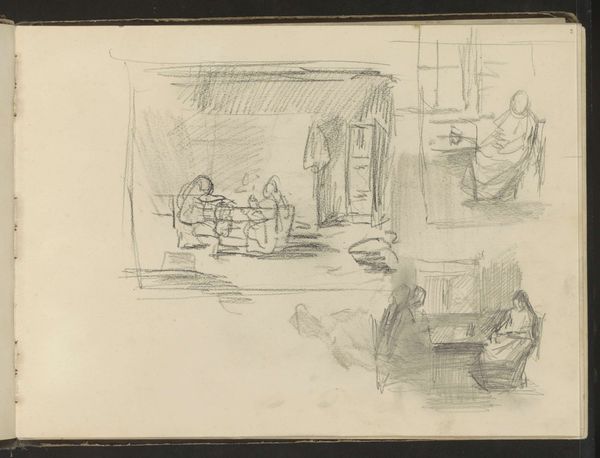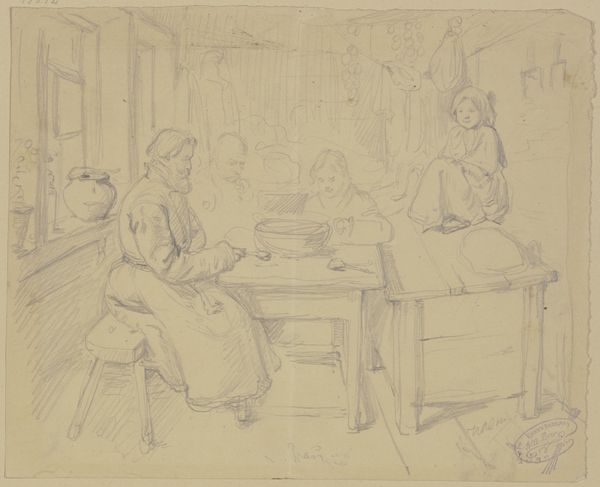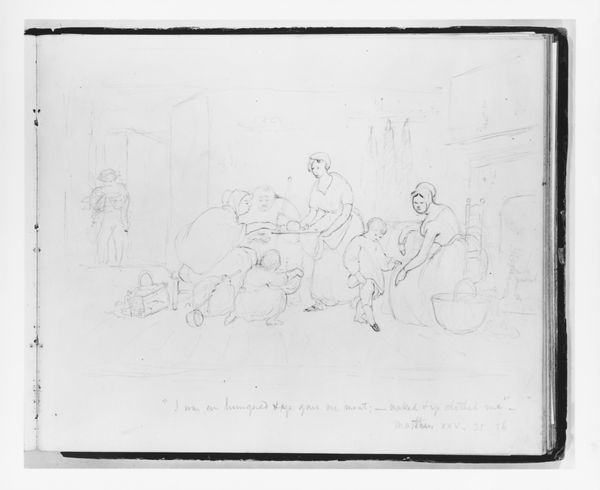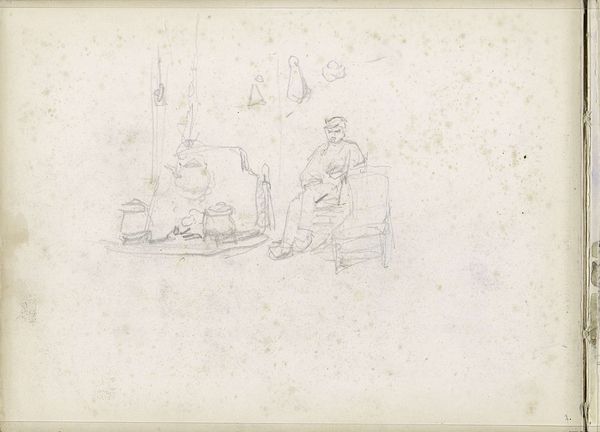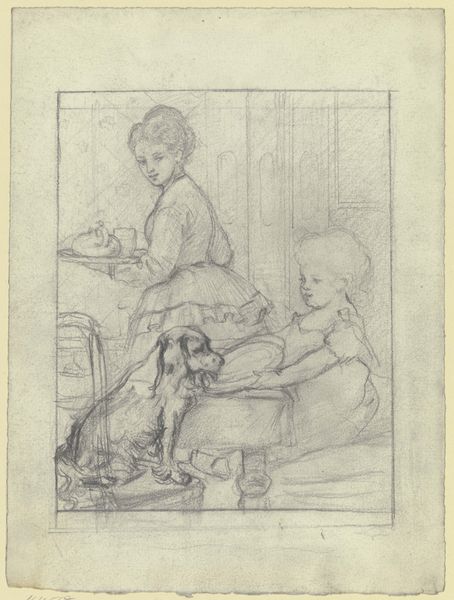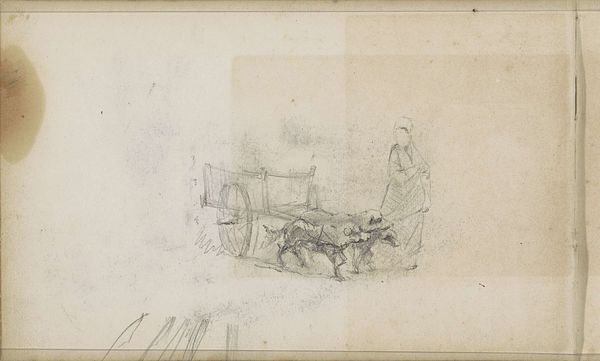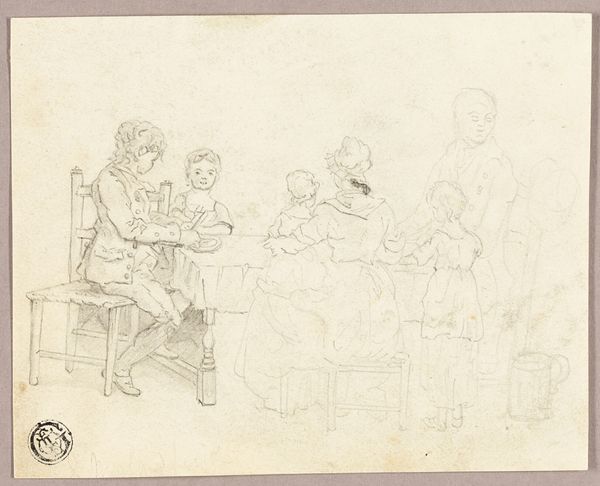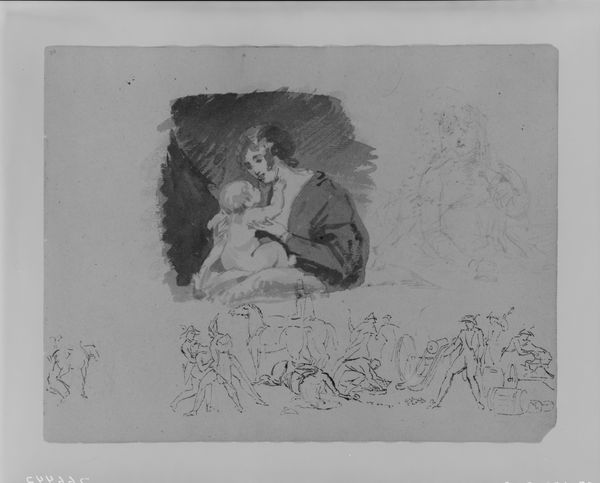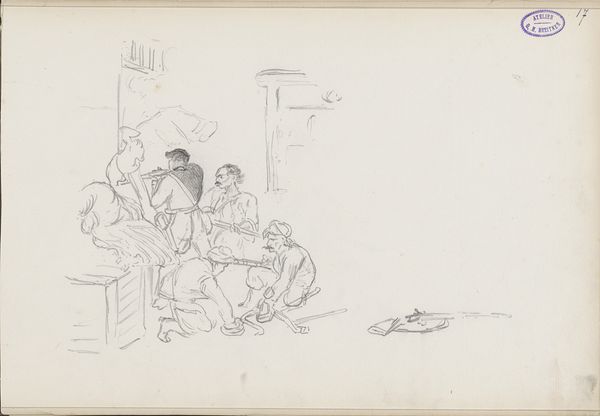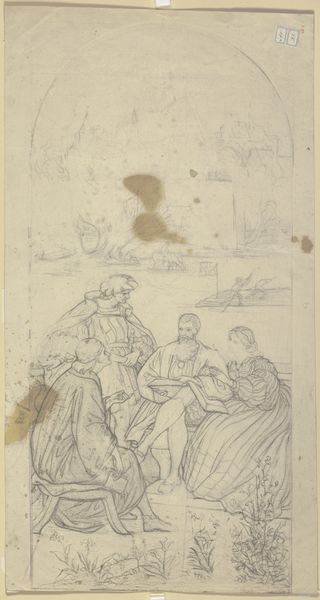
En ung ridder køber frugt hos en frugtsælgerske, der sidder i en by mellem en flodkaj og bygninger med fantastiske tårne. T.v.: en studie til Maria, på billedet "Kvinderne ved graven" 1850
0:00
0:00
drawing
#
drawing
#
landscape
#
romanticism
#
genre-painting
Dimensions: 208 mm (height) x 349 mm (width) (bladmaal)
Curator: Welcome. We’re looking at a drawing by Dankvart Dreyer, dating back to 1850. The rather lengthy title is, "En ung ridder køber frugt hos en frugtsælgerske, der sidder i en by mellem en flodkaj og bygninger med fantastiske tårne. T.v.: en studie til Maria, på billedet 'Kvinderne ved graven.'" Editor: That title is certainly a mouthful! My immediate reaction is a sense of understated charm. It's a very simple drawing, pencil on what looks like paper, a study rather than a finished piece, evoking a moment in time, suspended between the real and imagined. Curator: Precisely. As a study, it’s fascinating because it allows us to examine Dreyer’s process. The layering of different scenes—a genre scene and religious studies—on one sheet illuminates the artistic labor involved in his wider practice, questioning any clear hierarchy between art and craft. What did this mean for him? How were these sketches produced, consumed? Editor: Interesting that you should put it that way. I tend to think about it within a broader social context of art production during the mid-19th century. There's this Romanticist vision intermingled with a burgeoning market for genre scenes depicting everyday life. It highlights the tension between artistic ideals and commercial realities for artists like Dreyer. It is so fragile! How could this have been exhibited? Did anyone even look at this at the time? Curator: The drawing style reminds us that artistic value isn't simply intrinsic; it’s assigned, shaped by market forces, institutions like this very museum, and evolving social tastes. I think the use of drawing allows for a direct sense of production, revealing the hand of the artist. Editor: That is a valuable reminder. We can reflect on how cultural narratives influence our reading of such an unassuming artwork. Think about the romantic idealism in tension with material concerns about who the intended viewer might have been. That impacts our view of the artwork and its lasting relevance. Curator: Indeed, by focusing on the artistic labor involved in the drawing, we can better understand Dreyer's role within the broader artistic landscape of his time and today. Editor: Thank you. Reflecting on the image's historical role helps us rethink Romanticism as part of economic trends beyond just "high art."
Comments
No comments
Be the first to comment and join the conversation on the ultimate creative platform.
